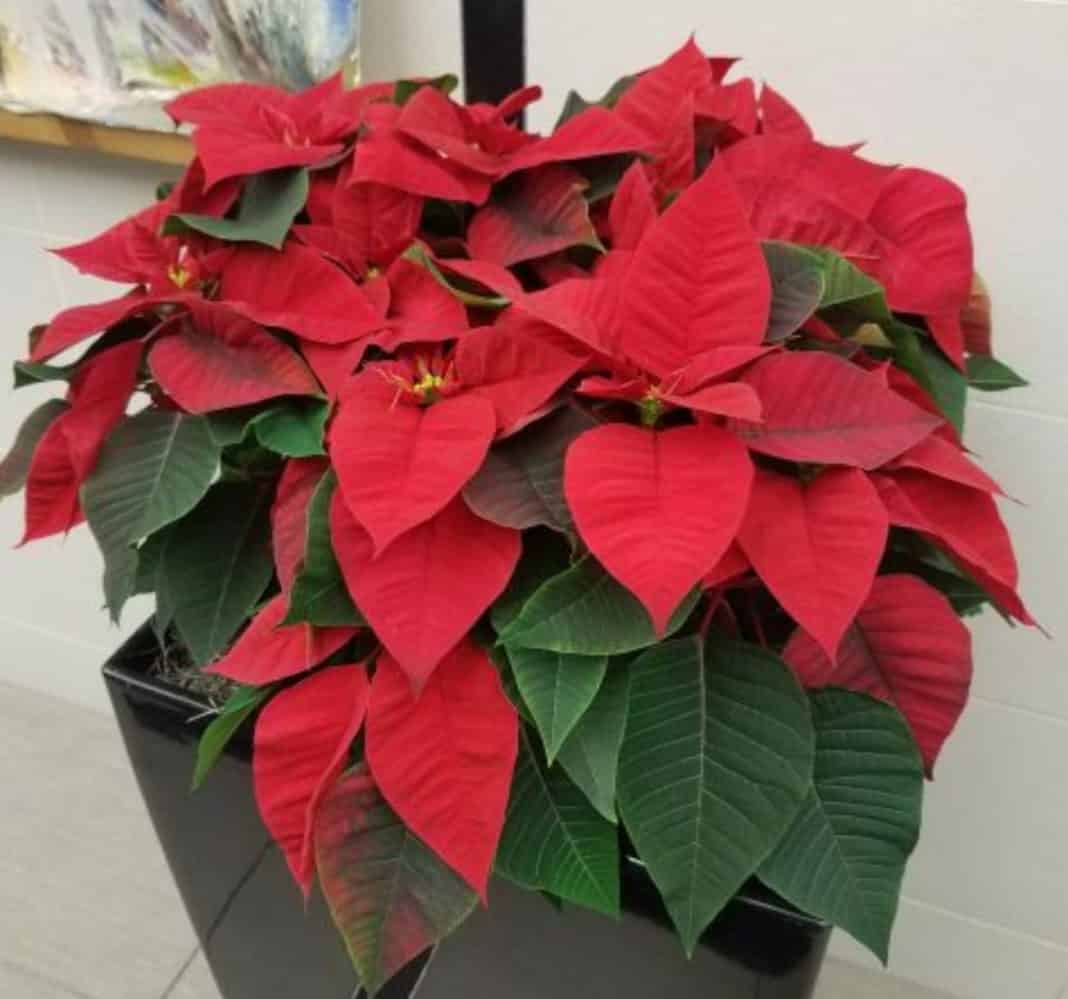Poinsettias – part of the Euphorbia family – are a popular winter plant because of their colorful leaves and also being attractive as green plants throughout the year.
Poinsettias change colour in response to shorter winter days with flowers making up the bracts, which look like petals, with tiny yellow flowers in the centre, called cyathia.
The colourful bracts attract insects to the flowers and will drop after being pollinated.
Poinsettias have a sticky white sap that can cause a skin rash, so gloves are recommended when working with the plants.
Wash all tools well after use, as the sap can make tools sticky.
Colours range from creamy white to pink, to the traditional bright red, to the more unusual colours of blue and purple.
Some varieties have bracts, with patterns in red and white, pink and white, or green and white – even bright orange.
Flower forms also vary, with some looking similar to a rose.
They can be grown indoors on a south, east or west window sill, where the plant will receive bright daylight, or outdoors in partial sun, getting 4-6 hours daily, both in well draining soil.
Avoid placing poinsettias, where the temperature fluctuates or may be drying, such as near cold drafts, heat ducts, fireplaces, fans, space heaters, etc.
They will suffer damage, if exposed to temperatures below 50 degrees Fahrenheit. Freezing temperatures will kill them.
Keep the soil moist and only water when the plant soil surface is dry to a light touch, or the pot feels lightweight when lifted.
Never allow poinsettia pots to sit in excess water, as constant wetness will rot the roots.
Fertilise every 3-4 weeks with an all-purpose household plant fertiliser when you see new new green leaves, stems or bracts growing.
In late spring or early summer, transplant into a larger container, about 2-4 inches bigger than the original pot, or into a partial sunny garden bed.






